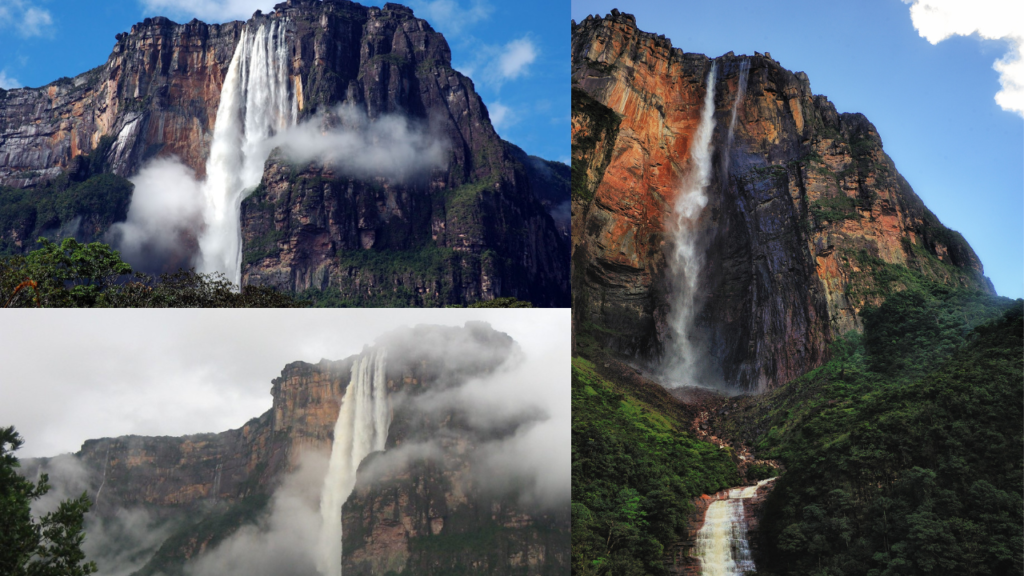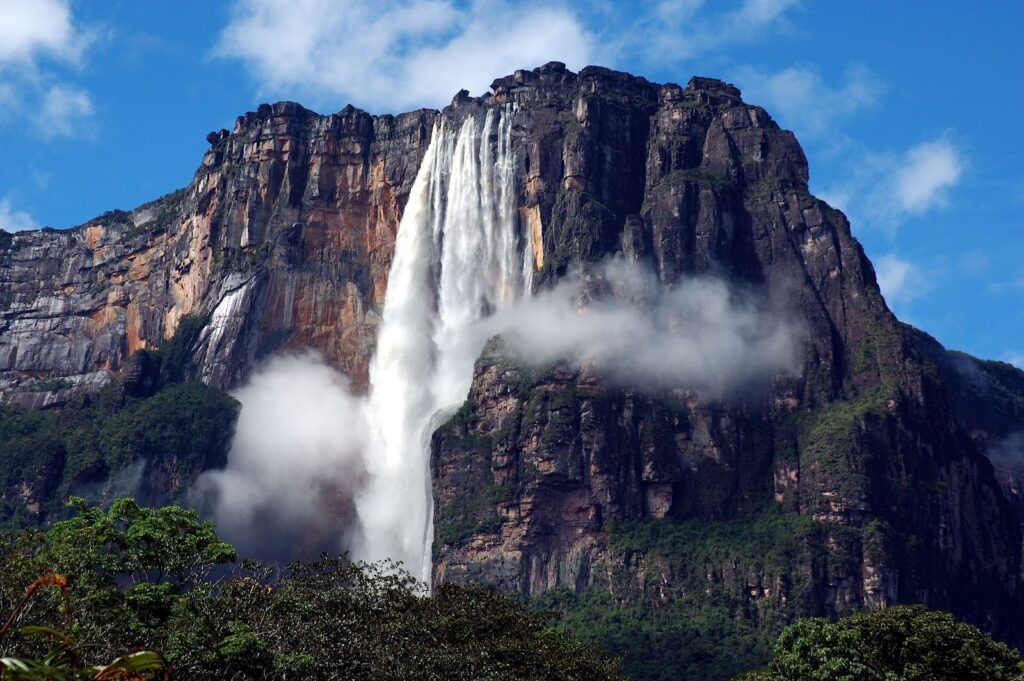When one thinks of breathtaking natural wonders, waterfalls often spring to mind, cascading water down cliffs and creating mesmerizing views. Among these, The 3rd Highest Waterfall in the World stands as a testament to nature’s grandeur and beauty. Nestled in the heart of Venezuela’s Canaima National Park, Angel Falls, or “Salto Ángel,” captivates the imagination with its stunning height and the breathtaking landscapes that surround it.

A Glimpse of Angel Falls

Angel Falls towers at an impressive height of 3,212 feet (979 meters), with an uninterrupted drop of 2,648 feet (807 meters). This sheer drop makes it the highest waterfall in the world. Named after Jimmy Angel, an American aviator who was the first to fly over the falls in 1933, the waterfall has become a symbol of Venezuela’s natural beauty. The indigenous Pemon people refer to it as “Kerepakupai Merú,” which translates to “waterfall of the deepest place.”
The waterfall is fed by the Churún River, which flows from the Auyán-tepui, one of the many tepuis or table-top mountains that are found in the Gran Sabana region. These unique geological formations create an extraordinary ecosystem, hosting a variety of flora and fauna, some of which are endemic to the area.
How to Get There
Visiting Angel Falls is an adventure in itself. The journey typically begins in the town of Canaima, which is accessible via a domestic flight from Caracas or other major cities in Venezuela. Once in Canaima, travelers can embark on a riverboat trip along the Carrao River, which leads to the base of the falls. The ride is a scenic experience, offering views of lush rainforests, towering cliffs, and the occasional glimpse of wildlife.
Upon reaching the foot of the falls, visitors often hike through the rainforest to get closer to the magnificent cascade. The sound of the water crashing against the rocks creates a mesmerizing backdrop, and the mist rising from the falls adds an ethereal quality to the experience. For the adventurous, there are opportunities for swimming in the pools at the base of the falls, but caution is advised due to the strong currents.
The Surrounding Landscape
The beauty of Angel Falls is enhanced by its surroundings. Canaima National Park, a UNESCO World Heritage site, encompasses a staggering 30,000 square kilometers of pristine wilderness. The park is characterized by its unique geological formations, including the numerous tepuis, which rise abruptly from the ground, creating a landscape that is both surreal and enchanting.
These towering plateaus are home to unique ecosystems, with many species of plants and animals that are found nowhere else on Earth. The area is rich in biodiversity, including colorful orchids, towering trees, and a variety of wildlife such as capybaras, anteaters, and diverse bird species.
Cultural Significance
For the indigenous Pemon people, Angel Falls holds great cultural significance. It is not just a stunning natural wonder; it is a part of their heritage and spiritual beliefs. The Pemon have long inhabited the Gran Sabana region, living in harmony with their environment. Their deep respect for the land is evident in their stories and traditions, many of which center around the falls and the surrounding landscape.
Visitors to Angel Falls often have the opportunity to engage with the Pemon community, learning about their customs, traditional practices, and the importance of preserving their natural heritage. This cultural exchange enriches the experience, allowing travelers to gain a deeper appreciation for the area and its people.
Environmental Challenges
Despite its beauty, Angel Falls and the surrounding environment face significant challenges. Deforestation, mining activities, and tourism development threaten the delicate ecosystems of the Gran Sabana region. The increasing demand for resources puts immense pressure on the land, leading to habitat loss and environmental degradation.
Efforts are being made to protect this natural wonder and its ecosystem. Conservation initiatives aim to balance the needs of local communities with the preservation of the park’s unique biodiversity. Sustainable tourism practices are being encouraged to minimize the impact of visitors on the fragile environment.
Visiting Tips
For those planning to visit the 3rd highest waterfall in the world, here are some tips to enhance your experience:
- Best Time to Visit: The ideal time to visit Angel Falls is during the rainy season, from May to November when the falls are at their most impressive. However, be prepared for possible weather disruptions.
- Travel Insurance: Given the remote location and the nature of the trip, travel insurance is highly recommended.
- Guided Tours: Opt for guided tours to ensure a safe and informative experience. Local guides are knowledgeable about the area and can enhance your understanding of its significance.
- Respect Nature: Always practice responsible tourism. Stay on designated paths, avoid littering, and respect the wildlife and local communities.
Conclusion:
In a world filled with breathtaking landscapes, Angel Falls shines brightly as The 3rd Highest Waterfall in the World. Its sheer height, stunning surroundings, and cultural significance make it a must-visit destination for nature lovers and adventure seekers alike. As we marvel at the beauty of this natural wonder, it’s essential to remember the importance of preserving such extraordinary places for future generations to enjoy. The magic of Angel Falls lies not only in its physical grandeur but also in the stories it tells and the connections it fosters between people and nature.







